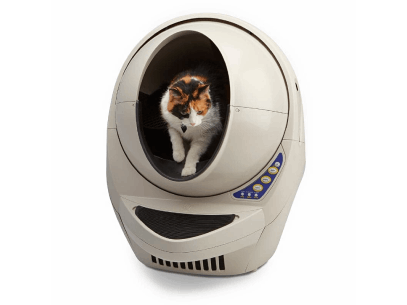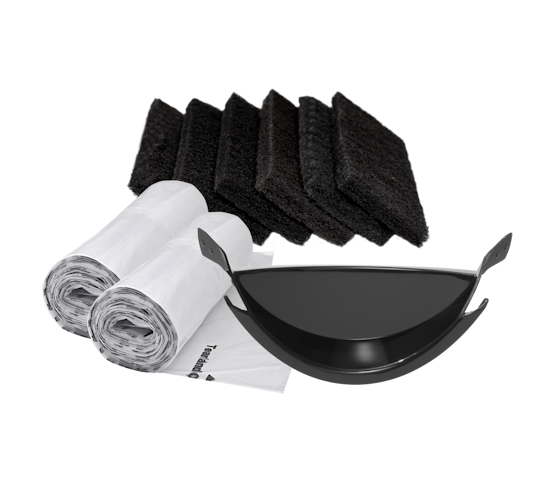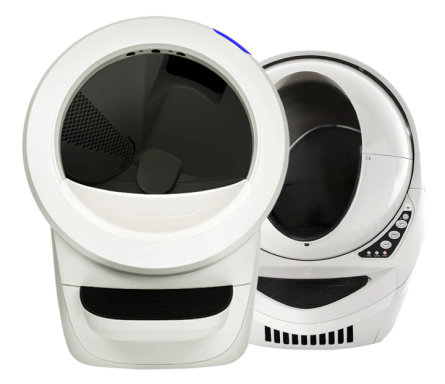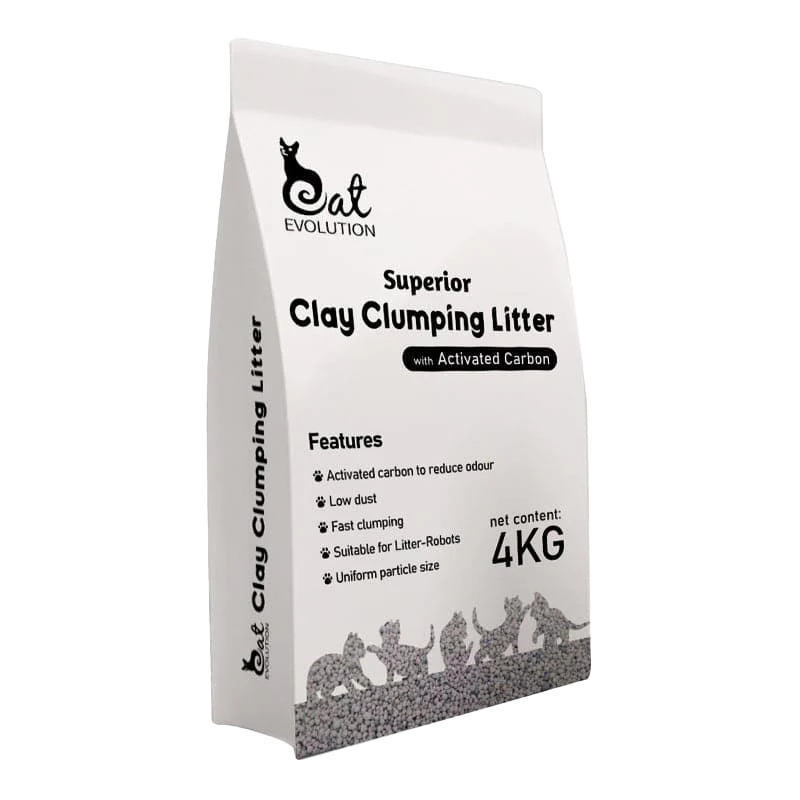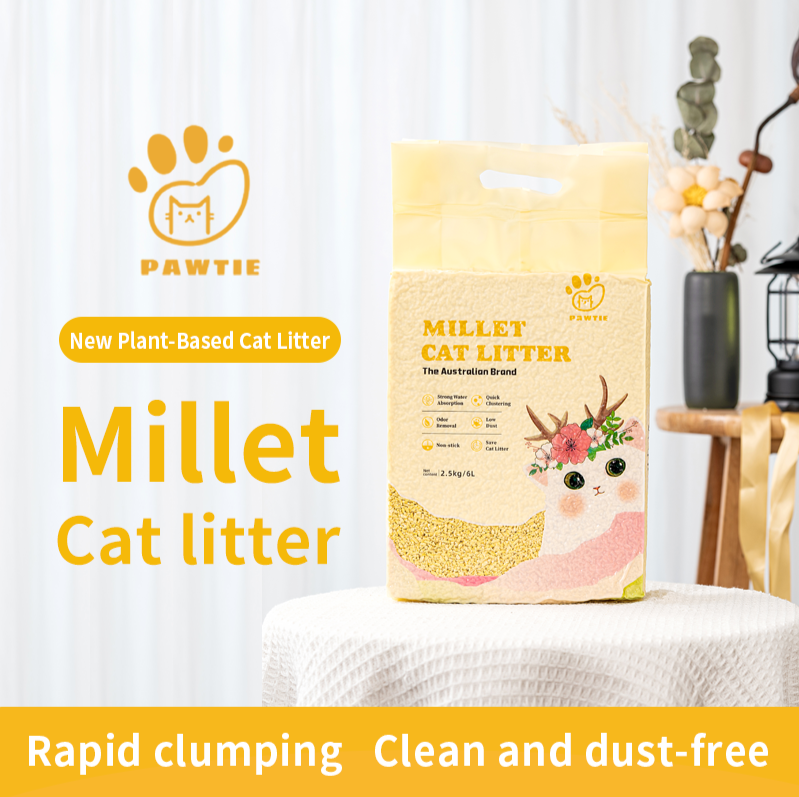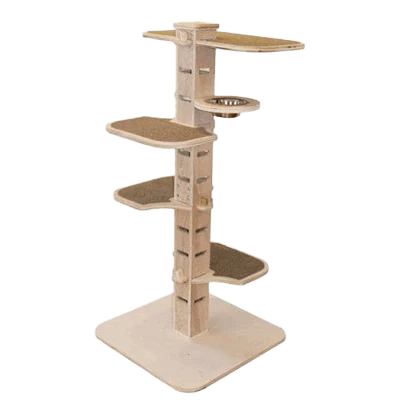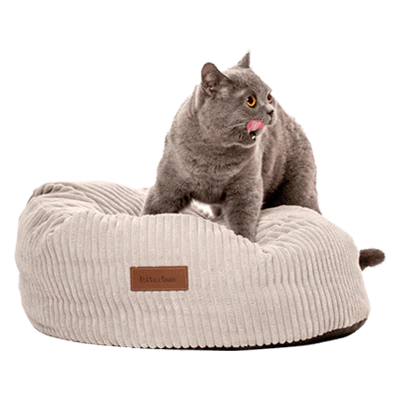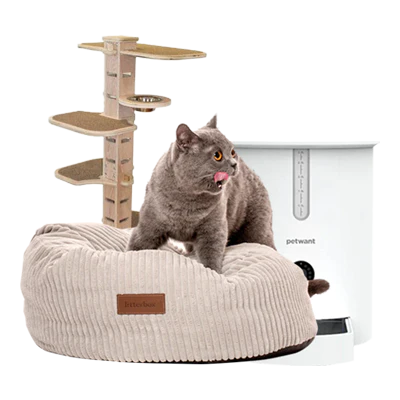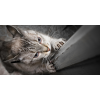One of the frustrating behaviours that cats do, is seeming to delight in destroying things with their sharp claws.
It’s not intentional in most cases, but an instinctive drive that has your kitty scratching your carpet, or other items.
The ability and need to hook in the claws and pull, ripping and tearing, is part of the hunting behaviour that used to be necessary for survival but is now more of a left overdrive that is present but unsatisfied, in modern cat living where food is provided without a need to hunt and carve up.
To help satisfy this instinctive drive, its best to train your kitten or cat asap to recognise that some things are ok to attack and claw, and others are not.
First steps are to make sure you have a variety of surfaces on cat platforms, towers or designated scratchable items, for your cat to enjoy satisfying this urge whenever they need. A tower with carpeted steps provides both stability, and scratch ability.
Cardboard platforms and floor pads are great to scratch and tear but will need renewing from time to time. It will take effort, but you can work with your kitty patiently and consistently to use the appropriate surfaces, rather than your carpet or furniture, like a scratching post or pad.
If you are unsure what to use as a substitute, observe which items are being targeted, and try and obtain similar surfaces for the designated items. Work on discouraging the inappropriate behaviour, with a water spray bottle helpful as a deterrent if NO does not suffice, and encouraging with treats, positive comments and play for good behaviour and use.
It may be necessary to move your kitty onto the appropriate item if they are scratching inappropriately. Do not yell at your kitty, as if the behaviour is attention-seeking, then it will be an encouragement to get your attention, and your carpet and furniture will suffer.
If you can do the training when you first get a kitten, it will be easier than re-training an adult cat who may have formed the habits elsewhere.
Other steps to help with the issue of scratching carpet and furniture, is to ensure you regularly clip your cat’s claws. Like humans, cats nails are designed to grow and can break or get very long if not kept short. In nature, the claws would be worn down regularly, keeping them to a manageable length.
Whilst some cats learn to chew their nails, the best option is to accustom your cat to having its nails clipped. Sharp clippers are best, to avoid cracking or crushing the nail, and do take care not to damage the quick which is like our fingertips under the nail and should not be cut. If you find it difficult to cut your cats claws, you can wrap him up in a towel, or use a jumper to contain his movements and paws apart from the one you are attending to.
It’s best to take time and teach your cat that clipping his claws is a time for cuddles and laps, not struggles. Picking an appropriate time when he is ready for cuddles also helps the process. A treat for good behaviour will also reinforce that clipping claws is a positive experience.
Remember that your cat is not being deliberately destructive, but is responding to a natural drive that you can work with by providing appropriate substitutes, to keep your home cat friendly and intact.

